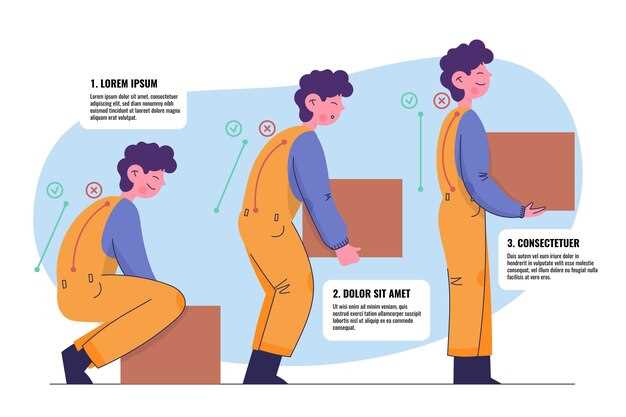
The Heel-and-Toe shifting technique is a crucial skill for performance driving and track racing. It allows drivers to smoothly downshift while maintaining control of the vehicle, enhancing both stability and speed during cornering. Proper execution of this technique can greatly improve the driving experience, especially in manual transmission vehicles.
In essence, heel-and-toe shifting involves a precise coordination of the brake and throttle pedals as the driver downshifts. By using the heel to apply pressure on the brake while simultaneously blipping the throttle with the toe, drivers can match the engine speed to the lower gear. This synchronization reduces stress on the drivetrain and minimizes unwanted vehicle movements, making it a vital maneuver for enthusiasts and racers alike.
This guide will break down the heel-and-toe technique into manageable steps, providing insights into the necessary footwork and timing. Whether you are an experienced driver looking to refine your skills or a novice eager to learn, mastering this technique can elevate your driving to a whole new level.
Understanding the Mechanics of Heel-Toe Downshifting

Heel-toe downshifting is an essential technique used by performance drivers to smoothly transition between gears while braking. This method allows for optimal control and stability of the vehicle during rapid deceleration. By mastering the mechanics of this technique, drivers can enhance their driving experience and maintain better vehicle dynamics.
At its core, heel-toe downshifting involves simultaneous braking and throttle input. During a downshift, the driver applies pressure to the brake pedal with the toes while using the heel to blip the throttle. This technique helps synchronize the engine speed with the transmission speed, resulting in a smoother shift and preventing drivetrain shock.
When performing heel-toe downshifting, the driver must first assess their speed and the appropriate gear for the upcoming corner. Once the decision is made, the driver applies the brakes with their right foot, progressively slowing the car. As the vehicle slows, the left foot moves to the clutch pedal, pressing it down to disengage the engine from the wheels.
Simultaneously, the heel of the right foot pivots to tap the accelerator pedal. This action raises the engine RPM, allowing it to match the lower gear’s speed. The critical aspect here is timing; the throttle blip must occur just as the driver begins to shift into the next gear. Once the RPMs are adequately matched, the driver can smoothly release the clutch while gently steering into the corner.
Practicing heel-toe downshifting can significantly improve a driver’s connection to their vehicle, increasing confidence in high-performance situations. As with any skill, consistency and practice are key to achieving fluidity in this technique. Understanding the mechanics behind heel-toe downshifting not only enhances driving prowess but also encourages safer, more controlled driving.
Step-by-Step Process for Mastering Heel-Toe Technique

To effectively master the heel-toe shifting technique, follow these structured steps. Each step builds on the previous one, ensuring comprehensive understanding and application.
Step 1: Understand the Basics – Before attempting heel-toe shifting, familiarize yourself with the standard manual transmission operation. Know the function of the clutch, accelerator, and brake pedals.
Step 2: Proper Foot Placement – Sit comfortably in your driver’s seat. Position your right foot such that the heel rests on the brake pedal while the toe hovers over the accelerator. Ensure your left foot can easily engage the clutch.
Step 3: Initiate Shifting – As you downshift, depress the clutch pedal fully with your left foot. Simultaneously, apply pressure on the brake pedal using the heel of your right foot to slow down.
Step 4: Rev Matching – While maintaining brake pressure, use the toe of your right foot to tap the accelerator slightly. This action should raise the engine RPM to match the speed of the lower gear you are shifting into.
Step 5: Complete the Shift – With the engine RPM matched, smoothly shift the gear lever into the desired lower gear while continuing to hold the clutch and brake. Release the clutch gradually to engage the gear smoothly.
Step 6: Practice – Repeated practice is essential. Start in a safe environment, like an empty parking lot, to get comfortable with the coordination of your feet during this technique.
Step 7: Refine Your Technique – Focus on the timing and coordination of your foot movements. The goal is to make the transitions seamless, ensuring that the car remains stable during shifts.
Step 8: Implement in Real Situations – Once confident, practice heel-toe shifting in various driving situations, such as on winding roads or during track days, where precision is critical.
By diligently following these steps, you’ll develop proficiency in the heel-toe technique, leading to smoother shifts and improved vehicle control.
Common Mistakes to Avoid While Practicing Heel-Toe Shifting
When mastering the heel-toe shifting technique, it’s crucial to be aware of common mistakes that can hinder your progress. One common error is improper foot placement. Ensuring that your heel is positioned correctly on the brake pedal and your toe on the gas pedal is essential for smooth transitions. If your feet are not aligned, it can lead to abrupt braking or acceleration.
Another mistake is to rush the downshifting process. It’s vital to focus on synchronizing the engine speed with the wheel speed. Skipping this step can result in engine stalling or excessive wear on the transmission. Take your time to practice rev-matching, ensuring that you apply the brake and gas pedals simultaneously for a smoother shift.
Many drivers also underestimate the importance of practice in a controlled environment. Practicing heel-toe shifting on public roads can lead to distractions and increased risks. Find an empty parking lot or a racetrack where you can concentrate solely on perfecting your technique without external pressures.
Additionally, avoid using excessive force during the braking or accelerator inputs. Smooth and gradual pressure is key to maintaining control of the vehicle. Abrupt movements can not only disrupt the shift but also compromise the car’s stability.
Lastly, neglecting the feedback from the car can be detrimental. Pay attention to how your vehicle responds during shifts. If you notice any unusual noises or sensations, take a moment to reassess your technique and make adjustments as necessary. Listening to your car will help you improve your heel-toe shifting skills effectively.












